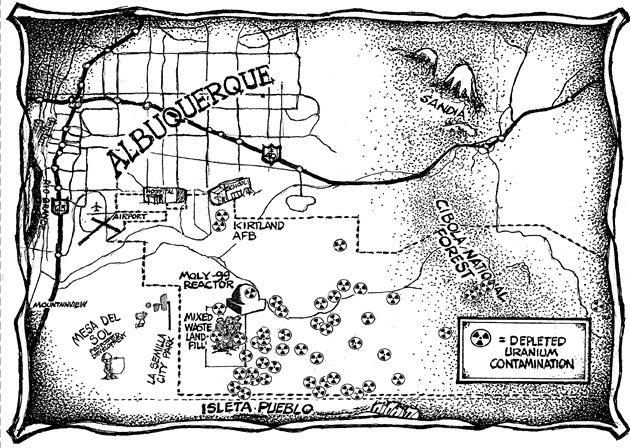
Heart of America Northwest
Files
Download Full Text (147 KB)
Document Type
Report
Date
3-2003
Description
This report consists of in-depth a detailed statement and description concerning the following injustices:
USDOE was allowed to delay construction of the massive plants needed to vitrify (turn into glass) Hanford’s deadly High-Level Nuclear Wastes, stored in 178 massive tanks, of which 68 have leaked over a million gallons of waste. Those leaks, and future leaks, are a major part of the concern over Hanford’s groundwater and the threat it poses to the Columbia River. In exchange for delaying vitrification, USDOE agreed to new Hanford Clean-Up Agreement milestones for cleanup of the Columbia River Corridor. Hanford’s top managers stated that they were committed to achieving the goal of unrestricted public use of the Columbia River corridor by 2011.
This, however, is a promise that has been forgotten and broken – like the treaty rights of the Yakama, Umatilla and Nez Perce Nations. All three tribes have guaranteed rights to live along the River, and fish at usual and accustomed fishing places, under the Treaties of 1855. Exposure to contamination from the soil and groundwater makes the exercise of these Treaty rights impossible today.
Nor is there any hope under the national “strategy” and “goals” adopted by the Bush Administration’s Department of Energy that the Hanford Reach National Monument will be safe for public and Tribal use by 2018, much less 2011. (“A Review of the Department of Energy’s Environmental Management Program”, February, 2002; and, implementation plans in the Hanford Performance Management Plan, “approved” by the Assistant Secretary of Energy for Environmental management, August, 2002). USDOE unilaterally changed the goal for soil cleanup along the Reach from 2011 to 2012, calling this an “accelerated cleanup plan” (or, “Hanford 2012 Plan”). USDOE left out of its “2012 plan” any goal or strategy for cleaning up the groundwater along the Hanford Reach. Rather, the USDOE’s national goals and strategies, and Hanford specific plans call for:
• allowing the contaminated groundwater to spread from the Hanford Central Plateau’s “200 Areas” (200 East and 200 West, where Plutonium and Uranium extraction occurred, and where the High-Level Waste tanks are located);
• changing the “points of compliance” from the edge of waste dumps and contaminated soil sites to the River shore1 ; and,
• using “natural attenuation” with monitoring to allow the contamination levels to grow before they eventually get diluted or the radionuclides decay over hundreds or thousands of years.
This research was completed money allocated during Round 3 of the Citizens’ Monitoring and Technical Assessment Fund (MTA Fund). Clark University was named conservator of these works.
If you have any questions or concerns please contact us at digitalrepository@clarku.edu
Publisher
Heart of America Northwest
Format
Keywords
nuclear weapons, nuclear weapons testing, environment, non-governmental organizations, United States Department of Energy, tribal governments, environmental cleanup, radioactive fallout, radioactive waste
Rights
Copyright belongs to the authors. Clark University was chosen by the non-profit peace and environmental groups as the conservator of these reports; our right to distribute these works ensures they remain available to the public in perpetuity as intended. Reuse at your own discretion with with due deference to copyright holders.
Location
Seattle, WA
Recommended Citation
Heart of America Northwest, "Groundwater Strategy for Hanford: A Contrast in Citizens’ Vision and Goals With USDOE’s and its Partner Tri-Party Agreement Agencies' Vision and Goals" (2003). Heart of America Northwest. 4.
https://commons.clarku.edu/heartofam/4



